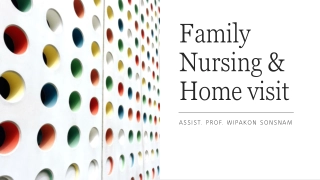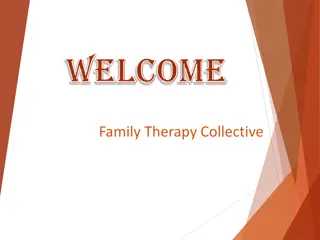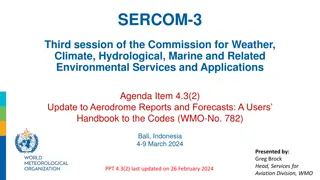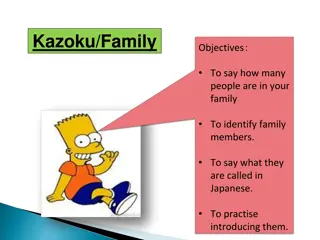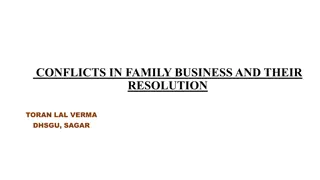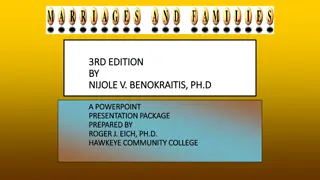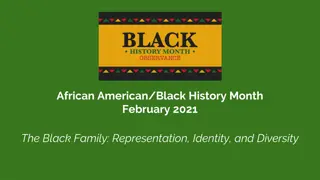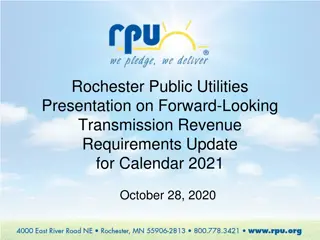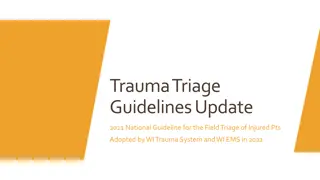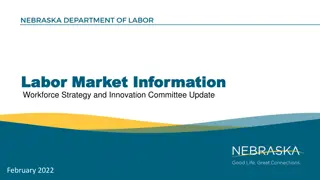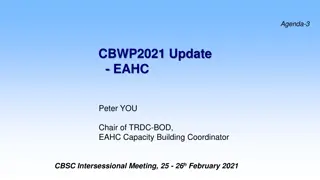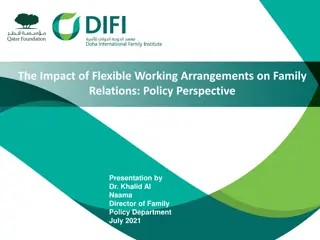
Understanding the Family First Prevention Services Act
The Family First Prevention Services Act focuses on prevention in child welfare, aiming to keep families together through statewide prevention plans, community resources, and higher standards for youth care settings. Learn more about the Act's impact and initiatives.
Download Presentation

Please find below an Image/Link to download the presentation.
The content on the website is provided AS IS for your information and personal use only. It may not be sold, licensed, or shared on other websites without obtaining consent from the author. If you encounter any issues during the download, it is possible that the publisher has removed the file from their server.
You are allowed to download the files provided on this website for personal or commercial use, subject to the condition that they are used lawfully. All files are the property of their respective owners.
The content on the website is provided AS IS for your information and personal use only. It may not be sold, licensed, or shared on other websites without obtaining consent from the author.
E N D
Presentation Transcript
Family First Update JoShonda Guerrier & Ken Mysogland February, 2021
What is the Family First Preventions Services Act? The Family First Prevention Services Act (FFPSA) places focus on prevention in child welfare - leading to more families remaining permanently together. Jurisdictions are required to develop a statewide prevention plan which includes identifying those families most likely in need of supports. Community pathways will be created for families to access family-centered community based resources. Evidenced Based Services addressing mental health, substance use treatment, and in-home parenting skill training are incentivized. Kinship navigator programs, which provide information, referral, and follow-up services to relatives raising children, will be established. The Act requires higher standards for treatment of youth placed into congregate care settings.
State of Connecticuts Prevention Efforts Family First State of Connecticut Prevention Plan Family First is a Tool
Values System Transformation Collaboration and Sustained Partnerships Re-alignment of Resources to Match our Values What is this Really About?
Chapin Hall Sister State Agencies Contracted Providers Thank You to Our 250+ Partners . Community Partners Parents with Lived Experience Youth
Governance Committee Candidacy Definition Kinship and Foster Care Program and Service Array Infrastructure Intensive Treatment 24/7 QRTP
Candidacy Definition The Governance Committee has approved the following groups under the Candidacy definition: Families with Accepted Careline Calls Families Who Have Been Accepted for Voluntary Services Pregnant and Parenting Youth in Foster Care Siblings of Children in Foster Care Youth Exiting to Permanency or Youth Exiting Out of Foster Care
Candidacy Approval Continued Families with Certain Characteristics Identified Through a Community or Neighborhood Pathway Children who are chronically absent from preschool/school or are truant from school Children of incarcerated parents Trafficked youth Unstably housed/homeless youth Families experiencing interpersonal violence Youth who have been referred to the juvenile review board or who have been arrested Caregivers who have, or have a child with, a substance use disorder, mental health condition or disability that impacts parents Infants born substance-exposed (as defined by the state CAPTA notification protocol)
Kinship and Foster Care Develop and implement a Caregiver Practice Model (CPM) which is an organizing framework, that will align our vision and values with policy and practice by describing and guiding the work of the agency and its contracted providers related to all caregivers in the State of Connecticut. Develop a Connecticut model of Kinship Navigation which may qualify for federal entitlement funding under the Family First Prevention Services Act (Family First).
Intensive Treatment 24/7 (QRTP) Qualified Residential Treatment Programs (QRTP): Children will be assessed to determine if treatment in a QRTP is the right level of care to meet their needs QRTP uses a trauma-informed treatment model Nursing and clinical staff accessible 24 hours a day/7 days a week Licensed and accredited by certain national organizations QRTPs must provide 6 months of aftercare Families must be engaged as part of placement decision-making and ongoing treatment Increased court oversight of placement Legislation is pending to establish these criteria in state statute
Infrastructure Practice and Policy Establishing strategies to guide families to the right services via an external care entity/pathway. Determined and prioritized essential care entity/pathway characteristics: Easily accessible for the families Supportive and empathetic to the families situation Provides a safe and stigma free environment In-person, website (chat) and phone line open 24/7 Ability to think about whole child and whole family Utilizing Parents as Experts facilitated group discussions to further inform the work.
Parents as Experts Facilitated Discussions We believe parents have the firsthand knowledge of how to assist us in developing a statewide plan of services and supports for families. Groups will be facilitated by a community partner and consultants from Chapin Hall at the University of Chicago, a policy and research center, supporting the Department of Children and Families. The following themes will be discussed: Getting access and initial contact to services and support Identifying a family s needs and priorities Connection to services and the benefit of the support The ideal experience for families in Connecticut
Program and Service Array and Fiscal Provided initial recommendations on Evidenced Based Programs (EBPs)to address identified needs of the Candidacy populations. Work is fluid with additional assessment of service gaps occurring and new programs becoming eligible to be utilized. Fiscal will match recommended services against the candidacy pool, estimate costs and produce financial models. Planning will match the values of the Agency.
THE FIRST FINISH LINE IS APRIL Then Come the Other Finish Lines ..
Phase 2 Implementation The Implementation Stage of Family First will involve: Additional Workgroups Stabilizing Service Selection Procurement of Care Entity/Pathway Workforce Training Data Collection Quality Assurance
Stay Up to Date Website CTFamilyFirst.CT.Gov E-mail DCF.CT.Family.First@CT.Gov Questions and Answers?

